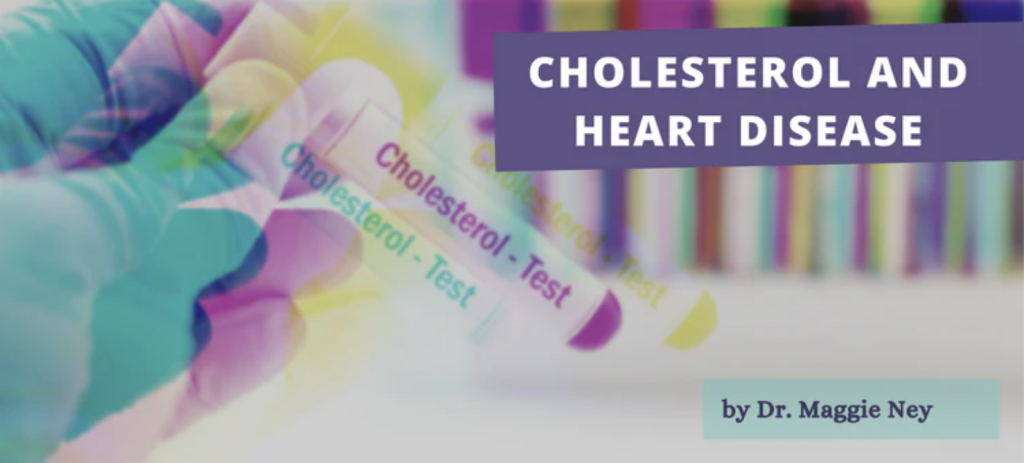Heart disease is the number one killer in the world. However, our assessment of heart disease risks is based upon a standard cholesterol panel which really only tells a very small part of the story.
There are so many misconceptions about cholesterol and heart disease and how to determine if you are at risk for heart attacks and strokes. In the 1980s, it was widely advised to limit cholesterol in the diet. Fat in food was replaced with sugar, salt, and refined vegetable oils, which only served to increase the number of people dying of heart disease and caused obesity and diabetes to soar.
The standard cholesterol panel, which consists of total cholesterol, LDL, HDL, and Triglycerides, is an antiquated method to assess risk of developing cardiovascular disease.
Did you know that 75% of people who go to the ER with a heart attack have normal cholesterol levels? How do we make sense of that? And a majority of people who go to the ER with heart attacks are actually diagnosed with diabetes and pre-diabetes upon hospital admission. Clearly, there is more to the story which needs to be shared. Let’s take a look at some more sensitive markers to assess risk of developing heart disease.
What is included in a standard cholesterol panel? These are important but vague and inadequate assessment values to determine if you need medication to lower heart disease risks.
Total Cholesterol: The total cholesterol represents the amount of cholesterol molecules in the blood. Essentially given as a weight. It is a combination of good and bad cholesterol. But, it does not tell you how many cholesterol particles you have in your blood. The amount of cholesterol particles, in addition to the size of those particles, matter greatly. Our current guidelines recommend cholesterol levels to be below 200mg/dL.
LDL: “L for lousy”, LDL is considered our “Bad” cholesterol. Our current guidelines recommend LDL to be below 100mg/dL.
HDL: “H for happy”, HDL is considered our “good” cholesterol. It takes cholesterol away from the heart to the liver to be processed and eliminated from the body. Our current guidelines recommend women to be above 50mg/dL and men to have above 40mg/dL. At the Akasha, we like to see men and women above 60mg/dL.
Triglycerides: A type of fat that forms when excess calories are consumed and not used for energy. This represents the level of dietary carbohydrates and sugars consumed. Fasting levels are considered normal below 100, optimal is under 80.
We now know that the above numbers only tell a very small part of the story. Total cholesterol is an estimate of the actual amount of cholesterol contained within each cholesterol particle. And it is the actual number and size of these particles which is a more accurate assessment of heart disease risk.
Understanding Lipoprotein particles:
Low density lipoprotein number: This tells us how many LDLs you have, not just the total weight, but how many individual particles. We want less of these carrier molecules around the body.
Low density lipoprotein size: This value tells us how big your lipoproteins are. Small, dense particle sizes are more aggressive at getting into the endothelial lining and contributing to plaque. We want our lipoproteins to be big and fluffy. Your LDL may be high but if they are big and fluffy, and you only have a few of them, this is less of a concern than if you have a lot of very small particles.
HDL Size: We want big HDLs. Even if your HDL number is low, if their size is big then you can collect and carry more cholesterol to the liver for removal from the body.
Apolipoproteins – These are proteins that bind to lipids and transport the lipids around the body.
Lipoprotein (a) or LP(a): Our Lipoprotein (a) is a LDL particle with an additional lipoprotein attached and is mostly genetically determined. We know that high levels of this marker can increase risk of heart disease, even if your other lipid markers are optimal.
Apolipoprotein B: This protein is involved in the metabolism of lipids and is the main component of lipoproteins that penetrate the endothelial lining and contribute to clogging arteries. The greater the number, the greater the chance of developing atherosclerosis, which can lead to high blood pressure, heart attacks, and strokes.
Apoprotein A1: HDL’s lipoprotein is ApoA and it carries fat from within the walls of the arteries to the liver for excretion. We want higher Apoprotein A1 numbers.
Additional lab tests – to help determine heart disease risk factors:
Fasting Glucose: this is your fasting blood sugar level and helps to determine if you are on the spectrum of insulin resistance. Normal is considered under 100, but we like to see it between 65-88 mg/dL.
Fasting Insulin: Insulin is a hormone secreted from the pancreas in response to sugar in the diet. A higher level of fasting insulin is associated with weight gain, diabetes, heart disease, and cancer. Normal levels are considered less than 19.6 uIU/ml but optimal fasting numbers are under 6.
HgA1C: This is a 3-month average of blood sugar. We want to see it under 5.6%. Between 5.7 – 6.5 is considered prediabetic and above 6.5 is diabetic.
HSCRP: This is a marker of inflammation in our body. We know that high LDL + inflammation is a dangerous combination that contributes to heart disease. If inflammation is elevated, it is essential that you and your doctor work to identify and treat the cause. We like to see hsCRP under 1mg/L.
Homocysteine: This is an amino acid and a marker of vascular inflammation. It is often elevated if your body is not methylating efficiently. Testing for methylation via an MTHFR genotype and addressing lifestyle and methylated B vitamins can help lower this number. We like to see homocysteine around or under 10 umol/L.
Uric Acid: this protein byproduct is getting a lot more attention recently as another key marker for metabolic health. Dr. David Perlmutter has written a lot about Uric Acid and its role in chronic disease, heart health, and metabolic syndrome. We really used to only care about Uric Acid and its influence in Gout, but now we are beginning to appreciate its role in heart health as well. Aim to have a uric acid below 5.5 mg/dl.
Oxidized LDL: Oxidized LDL occurs when LDL particles are confronted with inflammation. These oxidized particles are essentially rancid cholesterol and are the main contributors of atherosclerosis and heart disease
As you can see, there are so many other laboratory measures of heart disease risks than just the standard cholesterol panel. If it was just as simple as high cholesterol, then heart disease would not be the #1 killer worldwide.
If your doctor tells you have high cholesterol and need to start on a statin, ask them about these other markers to get a better understanding of your individual risk factors. Most of these labs can be run by conventional labs Quest and LabCorp. Ask your doctor about ordering a Quest Diagnostics Cardio IQ panel or LabCorp NMR profile to get a more comprehensive and useful cholesterol panel.
Dr. Maggie Ney is director of the Women’s Clinic at the Akasha Center for Integrative Medicine. She specializes in healthy aging and hormonal balance. Since heart disease is the leading cause of death for women in the United States, she is passionate about understanding each woman’s individual risk for cardiovascular disease.
















